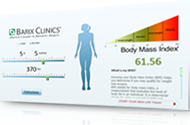Bariatric Surgery for Venous Stasis Disease
The Vascular Disease Foundation reports that venous stasis disease affects up to 20 percent of adults. Venous stasis disease, also known as venous insufficiency, occurs when there is a problem with the flow of blood from leg veins back to the heart. Healthy veins have valves that move blood towards the heart. The valves of a person with venous stasis disease don’t work right, and fluid pools in their legs.
By the age of 50, nearly 40 percent of women and 20 percent of men have significant leg vein problems. Additionally, the foundation estimates that at least 20 to 25 million Americans have varicose veins. Out of the millions of people who suffer from venous stasis disease, only 10 percent seek help.
If you think you have this condition, you shouldn’t have to live with the pain and discomfort. To help you learn more about its complications, we identified exactly what you need to know about venous stasis disease.
My main problem with diabetes was the circulation in my legs, which was so bad I was afraid I would need my legs amputated. Because of my diabetes I wanted people who knew what they were doing, not a fly-by-night operation. I had to choose people whom I felt confident with...I would do this over again in a heartbeat. Barix means my life.
— Mary Ann M.
Can bariatric surgery help with venous stasis disease?
Maintaining a healthy weight and regular exercise are two of the best ways to treat venous stasis disease. People who are morbidly obese struggle to return to a healthy weight — fewer than five percent of morbidly obese individuals are able to lose and keep off significant amounts of weight without surgery — which, in turn, makes regular exercise difficult, as well.
This inability to effectively exercise or shed pounds can lead to frustration and disappointment. That’s why bariatric weight loss surgery is a commonly used to jumpstart the treatment of venous stasis disease.
The University of Southern California Metabolic and Bariatric Surgery Program conducted a study that showed treating venous stasis disease with bariatric surgery is a powerful strategy. The researchers found that 95 percent of gastric bypass patients experienced complete resolution of venous stasis disease after surgery.
Bariatric surgery candidates at Barix Clinics can enjoy freedom from venous insufficiency, too. We help our weight loss surgery candidates understand what is going on through every step of the process — before, during and after their bariatric procedure.
We help patients get the insurance approvals they need, offer pre-surgical medical exams to ensure healing and provide post-surgical recovery spaces, nutritional counseling and support groups to help the exciting transition into their new lives.
What happens if you leave venous stasis disease untreated?
Weight loss surgery can solve your problems with venous stasis disease. If you ignore vein insufficiency, the condition will likely worsen. Your symptoms can become more severe and additional health problems may arise.
These conditions can include painful leg rashes, sores or skin ulcers, blood clots or pulmonary embolism — the blockage of an artery in the lung by a blood clot. A blood clot in the lung or heart can kill you.
In serious cases, chronic venous stasis disease can lead to partial or full amputations of the leg.
Are people who suffer from morbid obesity at greater risk of venous stasis disease?
Yes. Obesity is a top risk factor for venous stasis disease. An obese person’s cardiovascular system has to work overtime to keep blood moving throughout the body. The body has to supply blood to more tissue, straining the heart. The veins endure increased weight and blood pressure, increasing the likelihood that a vein will stop functioning entirely. This dangerous combination tends to cause venous veins.
What are common venous stasis disease symptoms?
Venous stasis disease has a variety of symptoms, but the most common are:
-
Varicose veins
-
Ankle swelling
-
Itching
-
Skin color changes
If you suspect you’re suffering from venous stasis disease, speak with your doctor right away. He or she will be able to perform a duplex Doppler test to examine your legs and determine how your blood is flowing. Contact us now to learn more about how bariatric surgery can help resolve your problems with morbid obesity permanently.
It’s time to talk about your venous stasis disease.
If you’re on the fence about bariatric weight loss surgery for venous stasis disease, consider Tammy W.’s story. Tammy’s weight was not only interfering with her relationship with her family, but threatening her life.
"Before surgery I was very tired and I had no energy,” Tammy says. “I had very high blood pressure and metabolic syndrome. My doctor told me that I wouldn't see my fourteen-year-old daughter graduate from high school. I was depressed about my size and lifestyle, so I did the only thing that made me feel better...I ate." With bariatric surgery, Tammy was able to regain control of her life and health.
If you’re suffering from morbid obesity and comorbidities like venous stasis disease, it’s time to learn about your new life. Barix Clinics can provide you with comprehensive weight loss surgery solutions you need to improve your quality of life. To learn more, contact us today.






